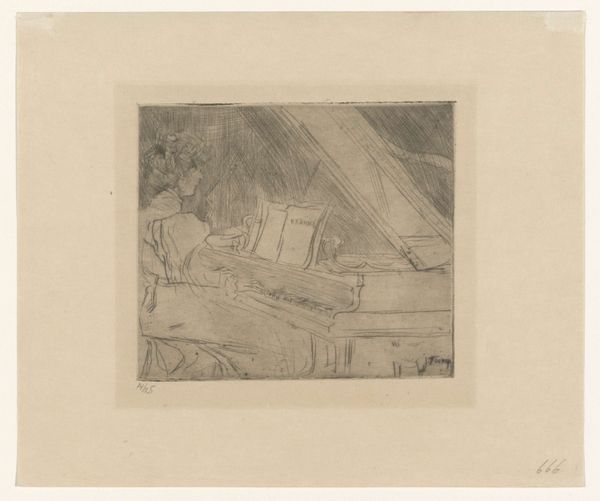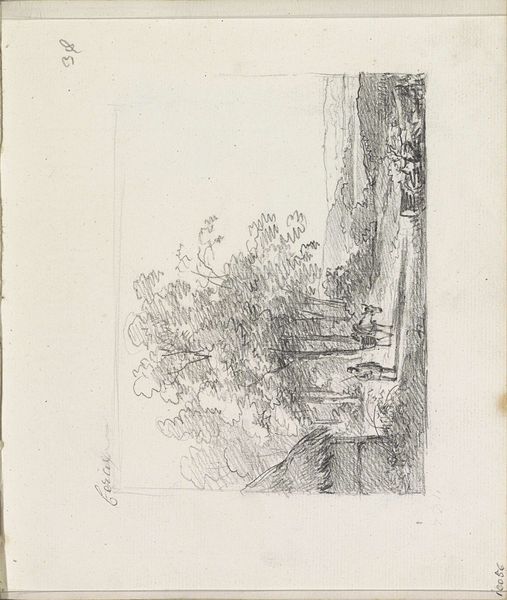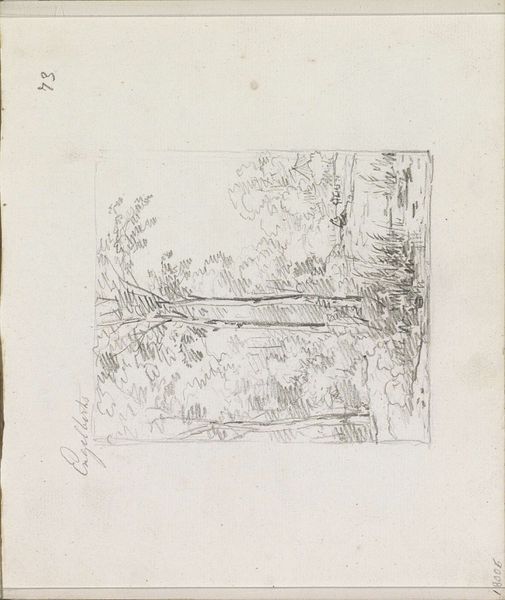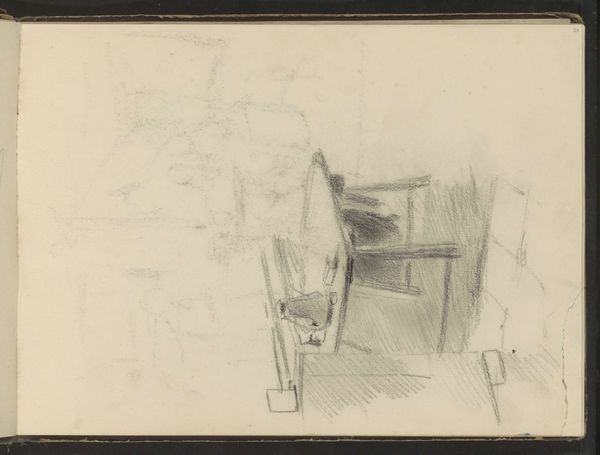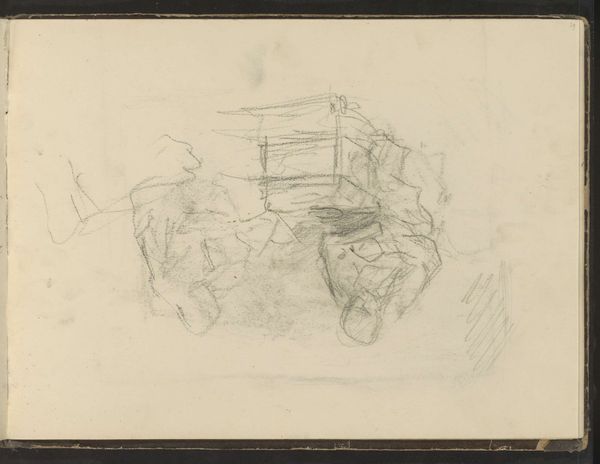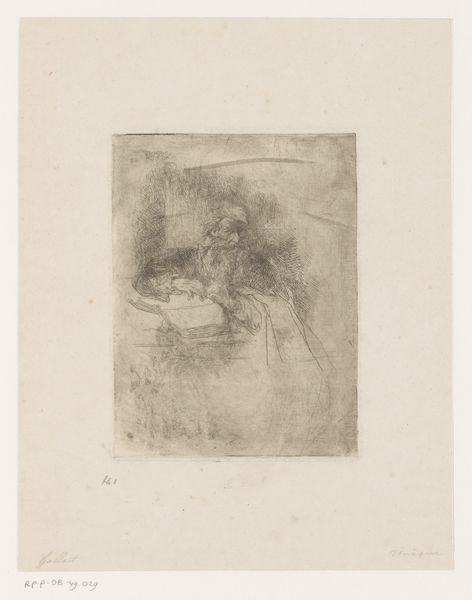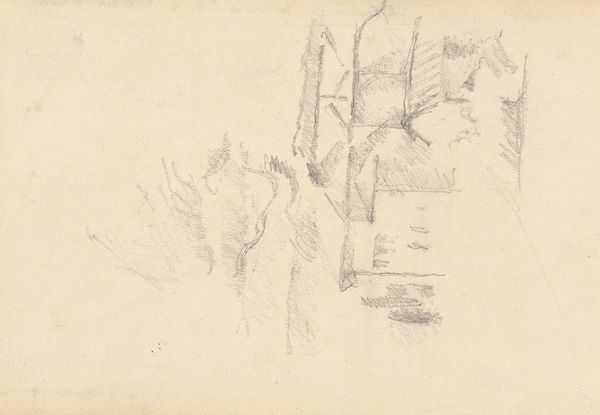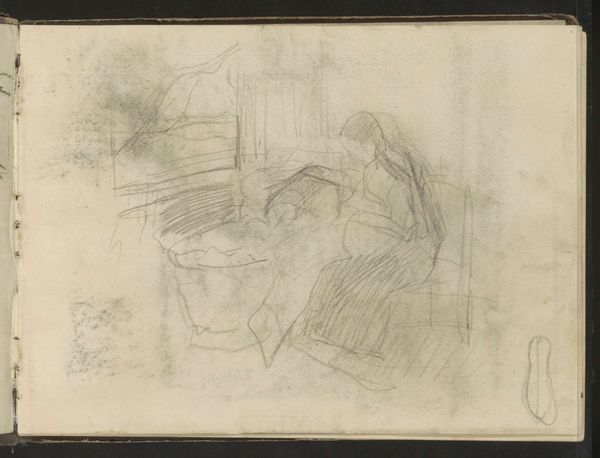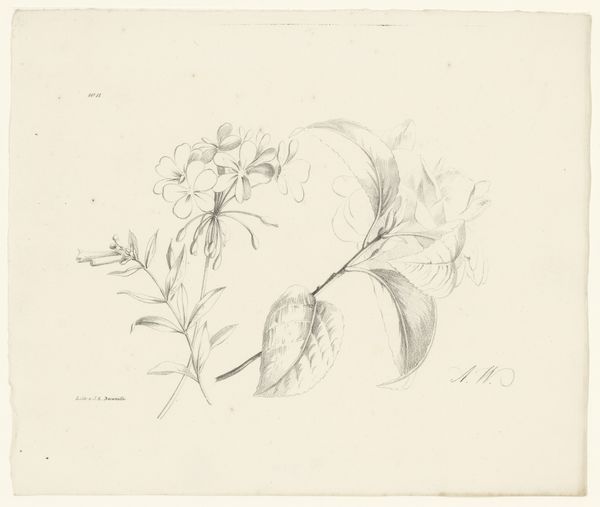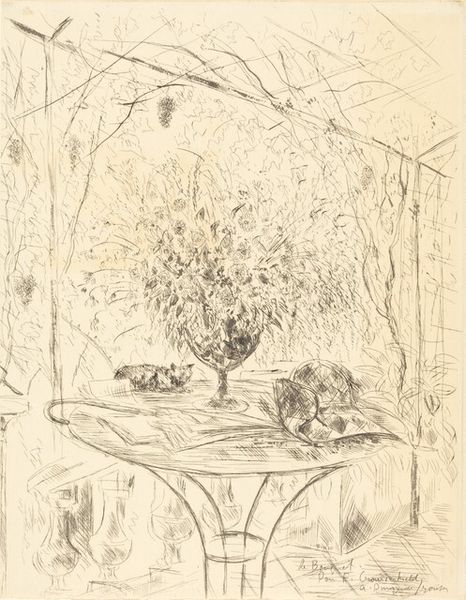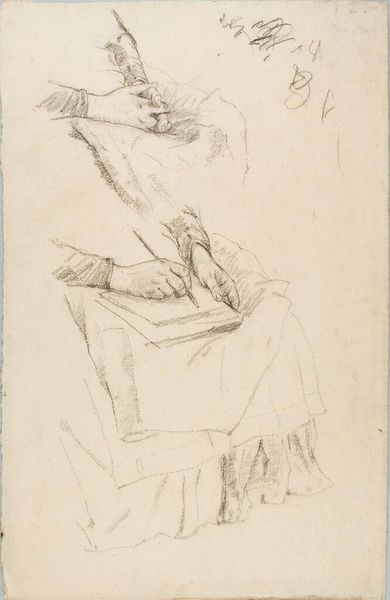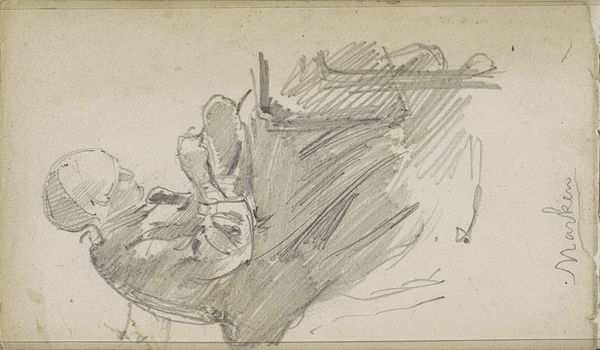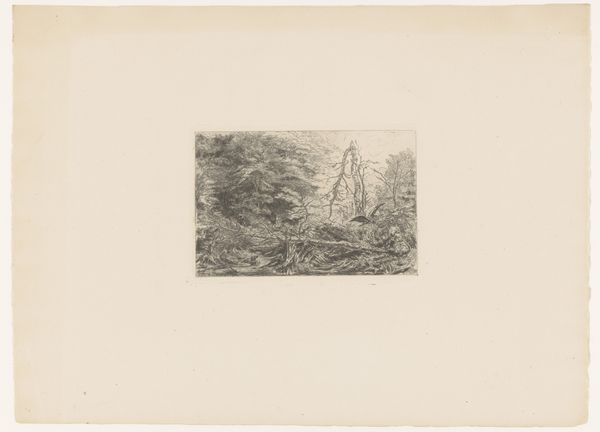
drawing, pencil
#
drawing
#
dutch-golden-age
#
pencil sketch
#
pencil
#
realism
Dimensions: height 291 mm, width 190 mm
Copyright: Rijks Museum: Open Domain
Curator: At first glance, this appears to be a rather unassuming work. Editor: It feels so quiet and domestic. I almost overlooked it at first! Curator: Indeed. What we're observing here is Jozef Israëls' "Stilleven van gereedschap", created somewhere between 1834 and 1911. This piece, housed at the Rijksmuseum, is a drawing rendered in pencil. Notice the artist’s command of line and the strategic deployment of light and shadow. The realism with which Israëls depicts these ordinary objects transforms them, inviting us to contemplate the artistry embedded in simplicity. Editor: But consider the social implications of depicting workaday tools. What do these specific items – the pail, the baskets, the scaffolding supports – reveal about the uncelebrated labor of ordinary people? This may be from an era where the divide between art and the reality of those involved in hard labour, like that depicted in sketches, may reveal not only those peoples’ daily conditions but the beginning of the socialist consciousness within European art. It provides a rare visual record of working lives so often relegated to the margins of historical narratives. Curator: An intriguing viewpoint. Although the social context of work is a possible consideration, one can interpret this piece through close formal inspection, noticing the interplay between linear perspective and subtle gradations in tone, an examination of aesthetic expression. Israëls expertly juxtaposes the geometrical rigidity of some elements against the gentle curves and soft textures of the objects and wall; that's quite telling, I believe. Editor: Still, it remains, at least for me, a reflection on a socio-economic aspect of society at the time; that these were important and, in many ways, fundamental items without which society could not exist as it did. This sketch is far more profound than just an arrangement of lines and tones on a surface. Curator: An interpretation indeed, although from a structural and design element, there’s clearly some deeper intent. Editor: Possibly, though its lasting impact, to me, centers on giving value to people and labor. Curator: Thank you for sharing that contextual viewpoint. It allows us a broad understanding. Editor: It adds nuance that helps reveal and inform art within society, making both accessible.
Comments
No comments
Be the first to comment and join the conversation on the ultimate creative platform.
